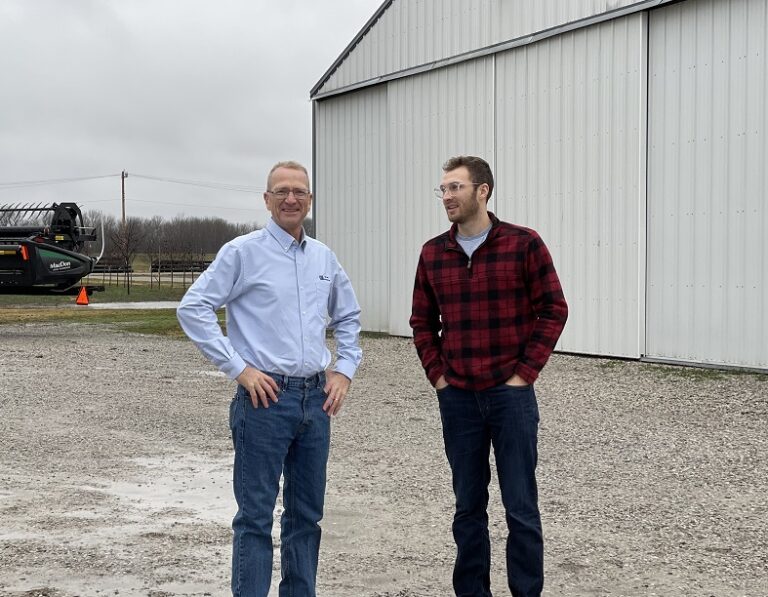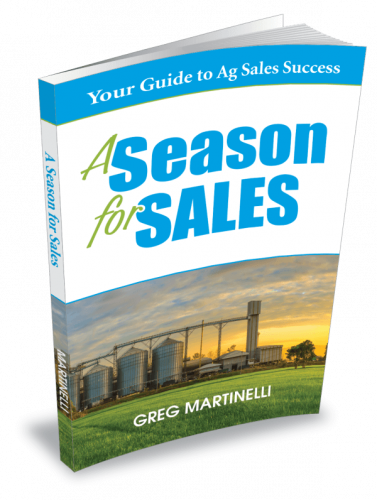“Does your product solve a producer’s problem?”
Customers purchase solutions to their problems!
No problem…..No Purchase
Recently, I agreed to be on a webinar that focused on several Ag Tech products. During one of the presentations, my mind started to wander. As the presenter explained their great new product, one thought kept running through my mind
“What problem does this product solve?”
Everything the presenter said was interesting and provided some good benefits, but it really didn’t solve a farmer’s problem. This was no small investment either. The cost or investment the producer had to make was fairly substantial.
Again and again, I kept coming back to thoughts on what problem was being solved for the customer. This inventor was a great person and had an interesting product and was very excited about bringing it to the market. When I finally asked about the problem it solved, the presenter referred to how great it would be for farmers to have the product. Not wanting to “rain on his parade” and be too negative in a public webinar, I let it go.
Over the last month, this product has struggled as their sales team began executing the Go-to-Market strategy. Producers like the product. They think it’s interesting and will give it a try on a demo run. Yet, they have almost no buyers.
Your products solve your customer’s problems. Those problems are costing your customers money, time, and emotional challenges. Let’s jump into how we justify the investment in our solution with ROI (Return on Investment). Let’s jump into the R (return) component.
If a producer is nice or agrees the benefits are helpful, the very next question he will ask is, “What’s it going to cost me?”
To prepare salespeople for this, I like to ask this question but instead of cost, I like to use “Impact”.
“What’s the Impact of your solution?”
Often, they seem stumped by my question. So, I ask them,
“Are you solving a $10 problem with a $100 solution?
or
a $100 problem with a $10 solution?”
I walk through this explanation on solving your customer’s problem. They pick up on it and soon will be explaining the problem their product solves.
So, I push a little further and ask them to explain the impact of solving that problem for their producers. If they haven’t thought it through, this is when they will go back to telling me about the features and benefits of the product.
For example, a typical conversation in a workshop might be:
- Me: “What problem does this product solve?”
- Salesperson: “The producer now knows which part of their field to focus on for better yields.”
- Me: “Great, now what’s the impact of that solution?”
- Salesperson: “What do you mean?”
- Me: “There are three ways a customer gets value from our products. It’s either money, time or emotion. We either make or save them money, free up time, or increase a positive or decrease a negative emotion. Which of these values does this product provide.”
- Salesperson: “It lets them know which part of their fields to focus on for higher yields.”
- Me: “Agreed and that is a good thing. But remember, when you explain this to a producer, the next question the producer will ask is, “How much does it cost?” And they should. An investment needs an ROI. The ROI comes to them in one or more of the three forms of value: time, money, or emotion. And don’t disregard emotion as some form of a soft value. There’s an old saying that we buy on emotion and then justify it with data.”
- Salesperson: “Well, it depends. It depends on how many acres…how often they spray….if they spray their own fields….the price of…..”
- Me: “I get it. The exact ROI number depends on many factors, and I get that each farm is different, etc. However, you said the average producer in this area farms 500 acres with a 50:50 split between corn and beans. They may have an old sprayer but most have the coop spray for them. They only embrace a few precision Ag tools. Take out a piece of paper and rough out the ROI for that type of farmer.”
I have one of these conversations more often than you think. I even have it with experienced salespeople who have had some success at selling their products. They have been out there promoting the features and benefits with some success but never put pen to paper to determine the actual ROI. Maybe they are selling on their relationship with their customers. Maybe they are just so persuasive that their customers don’t ask.
But this is selling on borrowed time. At some point, your customer is going to ask you to go through the ROI calculation. And, it’s much better to have thought about it ahead of time.
One last thought to leave you with: Explaining the ROI to me or internally at a company meeting is only step one.
Step two is getting the farmer to agree with your ROI calculation. To learn more about how to do that, click on the link, and let’s have a discussion about training you or your sales team.



